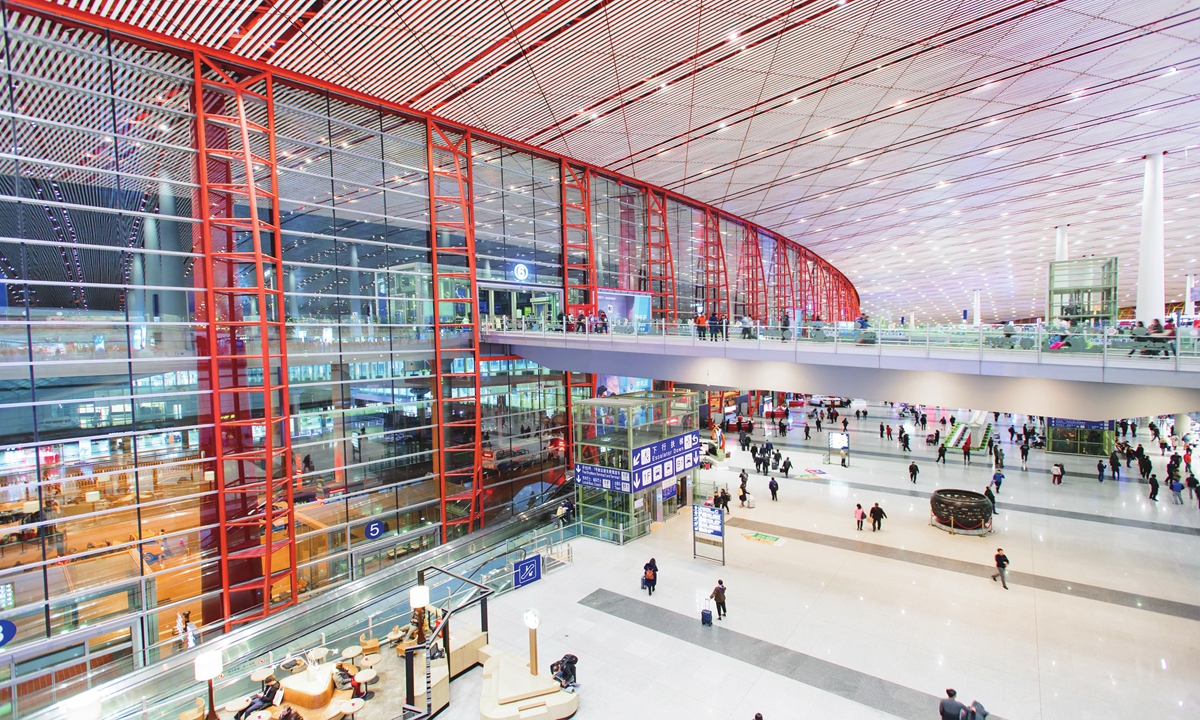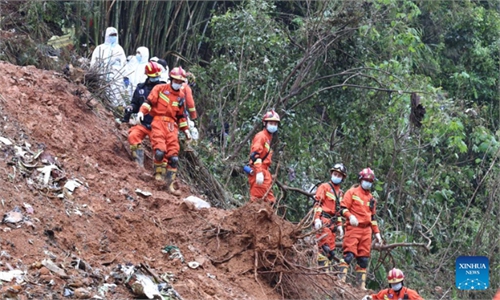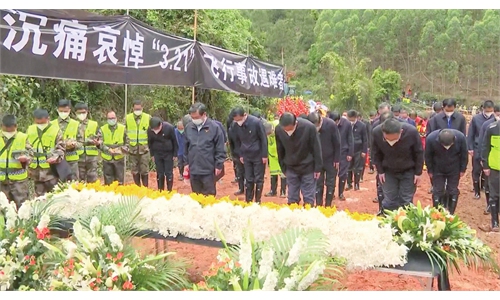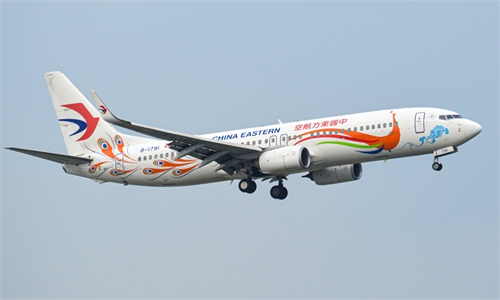Airlines, airports, regulators scramble to ferret out flight hidden risks in wake of crash

Terminal 3 at Beijing Capital International Airport Photo: VCG
China's civil aviation industry is conducting an industry wide safety review after a China Eastern Airlines' flight MU5735 crashed into a mountainside in South China's Guangxi Zhuang Autonomous Region, killing 132 persons onboard, including nine crew.The accident has pulled China, a country without fatal air incident for the past 4,227 days into a period of grieving and reflection, with millions of the industry employees under enormous pressure, and aviation safety becoming a top public concern.
Earlier this week, a supervisory group visited Air China's flight operations control center and the cooperation control and command center at Beijing's Capital International Airport.
Lü Erxue, deputy head of the Civil Aviation Administration of China (CAAC) said that the industry review will focus on ferreting out the hidden dangers to ensure the safety of the flying public.
The move is part of the CAAC's swift response to the accident, with the regulator setting up a supervisory group to carry out safety supervision in North and Southwest China. The group's main task includes review of personnel qualification management, operational risk control, and continuous airworthiness and maintenance of aircraft, in a bid to resolutely guarantee the safety of civil aviation.
Airlines have also beefed up flight safety procedures, following the CAAC's order to strengthen aviation safety measures, including stronger leadership for safety protocols, enhanced risk prevention and control, strict enforcement of regulations and operational standards, and fulfilling safety supervision responsibilities.
The CAAC ordered the industry to immediately carry out a two-week industry safety review to strengthen oversight of all hidden hazards and ensure the safety of aviation operations and public safety.
China's Ministry of Emergency Management also vowed to resolutely curb major industrial accidents, and said it should be more accurate and effective in conducting investigations of major risks and hidden dangers and solve deep-seated issues in a bid to ensure safety.
"We have a lot of meetings about flight safety, including learning various rules and regulations, and studying accidents to enhance learning, although safety training and learning has not been loosed in the past", an anonymous pilot told the Global Times on Wednesday.
"As a practitioner, we are very afraid of air crashes, we know that there is no absolute aviation safety in the world, and our daily work is to try to break through this limit. Aviation safety can't be too demanding, because life has no ifs, and once it is lost, it will never come back," a comment made by a pilot at twitter-like Weibo on the night of March 21, only hours after the crash.
Headwinds
Profitability in China's aviation sector is set to come under pressure in the near term, as higher oil prices raise costs and the aviation market demand faces headwinds from measures to control the spread of COVID-19, according to Fitch Ratings on Thursday.
In addition, the crash of the China Eastern Airlines flight MU5735 on March 21, 2022 could hurt domestic air travel sentiment in the short term. Fitch said the Boeing 737 Next Generation aircraft has a long and impressive safety record. Some Chinese domestic travelers may also decide to switch to alternative forms of transport, such as high-speed trains, over the next one to two years.
These comments were echoed by other industry reports addressing the impact of the tragic air crash.
A report released by Anxin Securities said that a short-term demand shock across the aviation industry was inevitable, and the public panic may lead to a decline in demand. In addition, airlines will adopt stricter regulatory measures in terms of slot arrangement, aircraft introduction, and pilot training, placing a lower ceiling on near-term capacity growth of air routes.
Hongta Securities stated that after the accident, the civil aviation industry may face stricter safety supervision measures, and face challenges in terms of flight schedules and plane introduction, with small and medium-sized airlines facing financial pressure.
Aside from the air crash, market watchers highlighted that the industry's current state is not being helped by the sporadic resurgences of COVID-19 related control measures across the country.
The air crash on March 21 actually did not have much impact on other flights. Tellingly, since February 21, the number of domestic flights has dropped to about 3,000 flights per day under epidemic control policies, compared with a peak of around 13,000 flights previously prior to the advent of the coronavirus, Zheng Hongfeng, CEO of information provider VariFlight told the Global Times on Wednesday.
There is still a risk of continued market decline in the future, he warned.
On March 18, an official from the CAAC said that the impact of the epidemic on the civil aviation industry has far exceeded forecasts.
In 2020, the entire industry suffered a huge loss of 97.4 billion yuan ($15.3 billion). Among them, airlines lost 79.4 billion yuan, while airport operators lost 23.3 billion yuan. In 2021, the entire industry lost 84.2 billion yuan.



